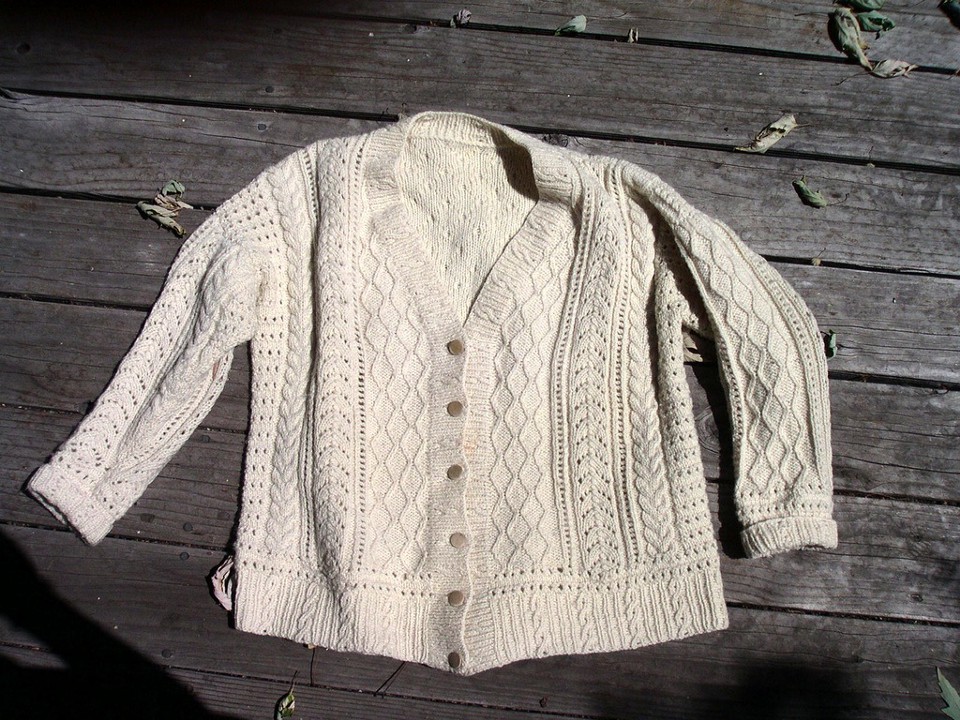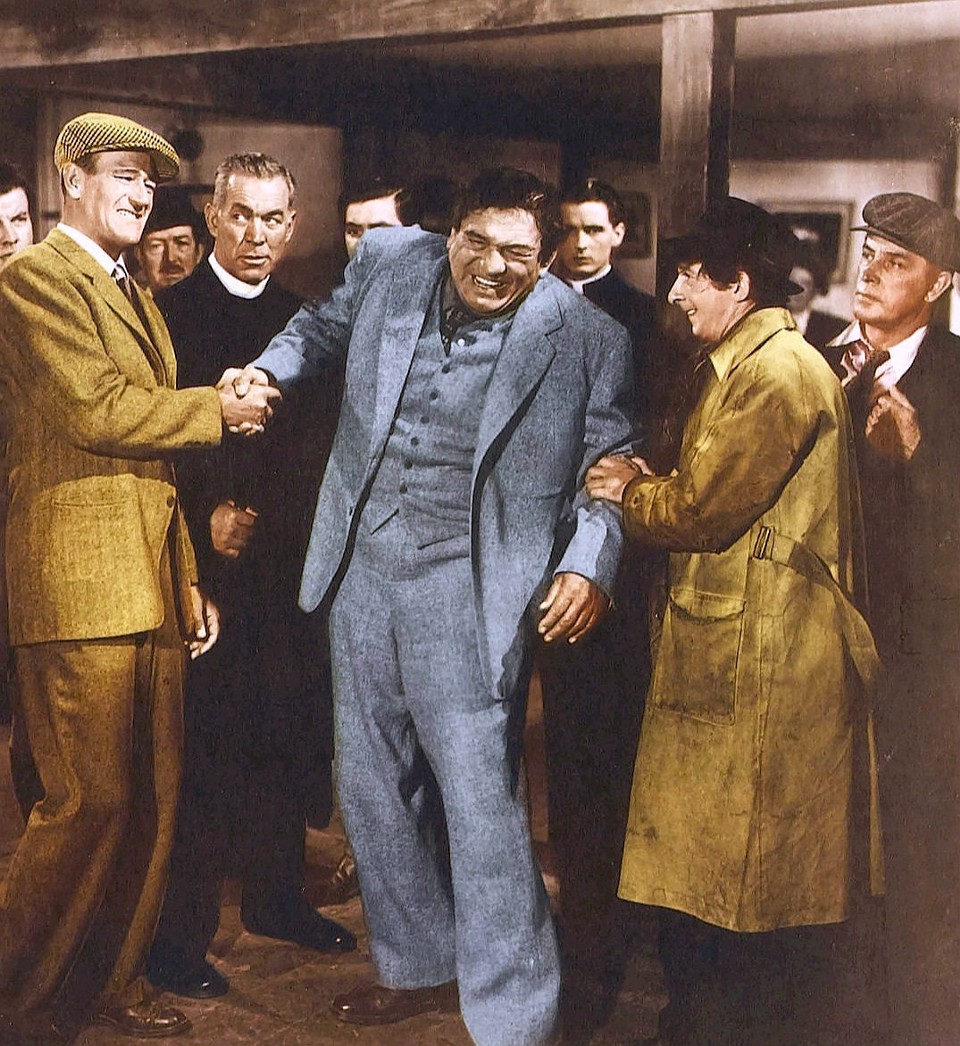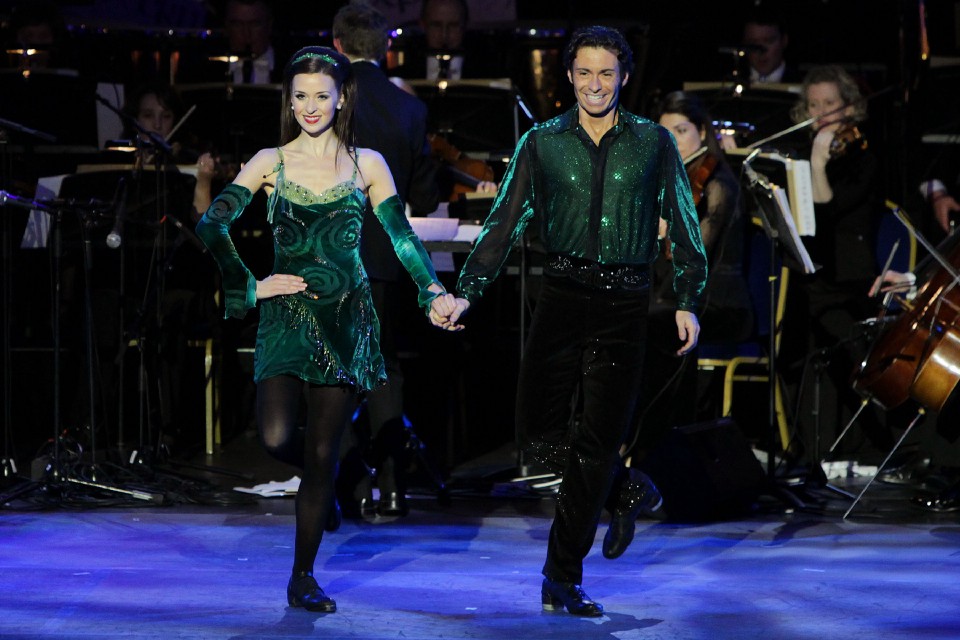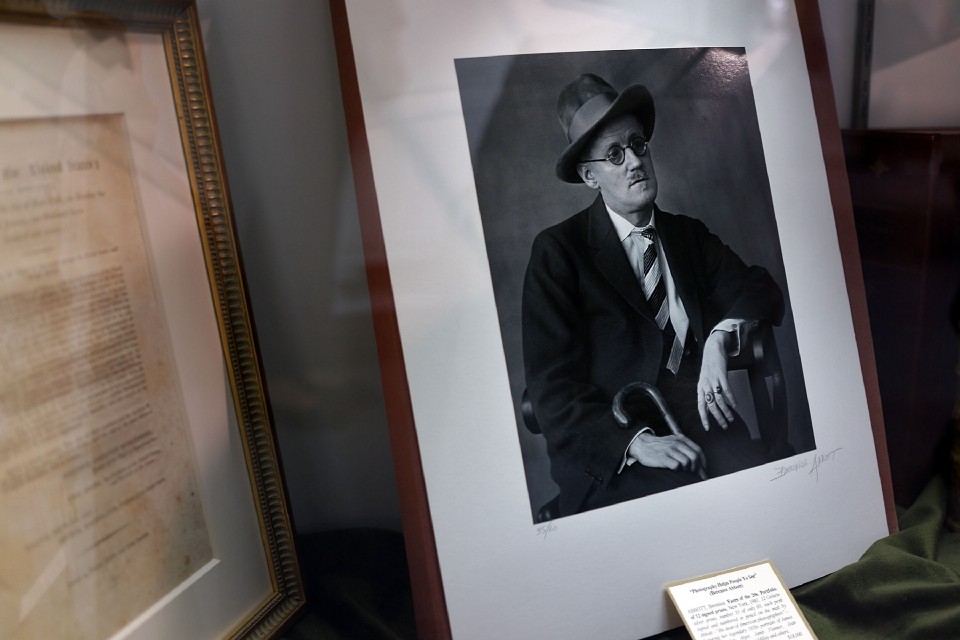Among all the travel ban controversies and false wiretapping allegations, President Donald Trump played by the White House rule book at least once this month: On the 1st, he became the fourth consecutive president to designate March as Irish-American Heritage Month.
George H.W. Bush introduced legislation recognizing Irish-American Heritage Month in 1991. In his proclamation, Bush praised “the hardy character, the rich cultural heritage, and the many valuable contributions of Irish-Americans”—traits that stand in stark contrast to the green beer and drunken parades so many have come to associate with St. Patrick’s Day.
Bush’s timing was hardly a coincidence. Ireland had become an economic force by the mid-’90s, thanks largely to low corporate tax rates and an investment in education. This “Celtic Tiger era” cemented Irishness as an “a la carte ethnicity, the ideal all-purpose identity credential,” University College Dublin head of film studies Diane Negra writes in the 2006 essay collection The Irish In Us: Irishness, Performativity, and Popular Culture. Not long after, “Kiss Me, I’m Irish” T-shirts were made available at any Jersey Shore establishment worth its salt.
As a result, Irishness today remains “a category of racial fantasy” that is a form of “enriched whiteness,” she writes, which Americans reclaim by reading Angela’s Ashesor watching Ballykissangel(it was a ’90s thing).
But to what extent are America’s touchstone “Irish” pop-culture icons racial fantasies, and to what extent do they represent cultural artifacts that Americans have integrated into their culture? On this year’s Irish-American Heritage Month, Pacific Standard’s palest, most soda-bread-loving staff member rated five March favorites on a scale from “figment of the American imagination” to “its blood runs as blue as the original color of the St. Patrick’s Day Feast.” May the following inform your March 17th festivities.

A Delicious Irish Sham

Shamrock Shake: You can’t really begrudge the Shamrock Shake its immediate success: When the shake debuted as the “St. Patrick’s Day Shake” in March 1970, all proceeds went toward buying the first Ronald McDonald house for parents of sick children.
But let’s be clear: The fast-food behemoth’s minty, 550-calorie (for the small!), maraschino-topped, all-American intestine-clogger has not been charitable to the Irish. In the 1970s McDonald’s debuted a green, Irish-accented furry monster called Uncle O’Grimacey to promote the shakes, who came complete with a buckled hat and a shamrock-embroidered jacket; in a 1980s television advertisement, one sip of the shake defied all natural order and caused the atoms to coalesce in the form of a green bowler hat on the head of any delighted Mickey D’s patron, which, in turn, compelled him to step dance. If McDonald’s strategies seem slightly more culturally aware this decade, one of this year’s Shamrock Shake video ads suggests otherwise: It juxtaposed images of rolling green hills (could be Ireland!) with images of Stonehenge and an actor wearing a tartan hat (definitely not Ireland!). If you want a bundle of delicious calories to celebrate Irish heritage, try a porter cake or apple tart instead.
Yeah, Not Super Hip in Ireland Anymore

Aran Fisherman Sweaters: Aran sweaters are Ireland’s equivalent of the Scottish tartan: omnipresent in Irish tourist shops, frequently exported to nostalgic Americans via Irish gift catalogs and J.Crew, and dogged by an unproven myth that old families have long had their own patterns. The Aran sweater gets some authenticity points for being a garment that the Irish actually have historically worn: Production of the Aran sweater took off in the mid-20th century, when enterprising companies on the west side of the island began producing folksy goods to capitalize on the area’s rural mythology. The timing was especially welcome, as the government was simultaneously funding a seaweed-processing business and tweed manufacturer to bring more business to the impoverished area, whose main industries were fishing and farming.
But Irish people have mixed feelings about Americans sporting the threads, writesSiún Carden, a research fellow at the Centre for Rural Creativity at the University of the Highlands and Islands. When studying message boards on the knitting social network Ravelry, she found that “American inquiries about Aran knitting are not always met with a cheerful welcome.” For Irish knitters, Aran sweaters represented times of economic hardship, not national pride; and several message forums were devoted to countering American questions about Aran sweater myths with historical evidence. So wear the Aran sweater — but know your kin on the Emerald Isle may not be super happy about it.
Filmed in Ireland, Conceived in La La Land

The Quiet Man:What It’s a Wonderful Life is to Christmas, The Quiet Man is to St. Patrick’s Day — a seasonal classic ritualistically screened by families and cable movie channels on March 17th. But let’s be clear: This 1952 American-returns-to-his-Irish-roots drama, filmed in the small Irish town of Cong, in Country Mayo, is no realist drama about rural Irish life. When it debuted in Ireland in ’52, locals weren’t happy about the film’s depiction of several Irish characters as tipplers and bar brawlers, nor its main character’s sentimental interest in rural life (Innisfree, the town where the movie is set, has no electricity). “I cannot for the life of me see that it has any relation to the Ireland that I or anyone else can have seen or known,” Dublin’s Gate Theatre co-founder Hilton Edwards said in 1953. Irish scorn of the film lives on: “‘The Quiet Man’ ranks among most idiotic stupid anti Irish movies ever made,” Malachy McCourt wrote on his Facebook page last year.
That’s no ding on Ford, who makes it pretty explicit in the movie that he’s filming an entirely personal fantasy. Adapting the film from a 1933 short story of the same name by Irish author Maurice Walsh, Ford, the child of Gaelic-speaking immigrant parents, changed the name of the village where his protagonist settles to Innisfree, alluding to the fantastical land from W.B. Yeats’ poem “The Lake Isle of Innisfree,” and the name of the main character from “Paddy” to “Sean” — the Irish version of John. And, in the film, Irish characters find Sean’s mawkishness about their rural life ridiculous (“Innisfree is far from being heaven,” one character tells him), demonstrating Ford’s own self-awareness that his Ireland is a Hollywood fantasy. The Quiet Man, then, stands as a timeless depiction of Americans’ obsession with a provincial Irish fantasy—not an example of real Irish culture making its way across the Atlantic.
A Real Reason for an Irish Jig

Riverdance:It’s no wonder Americans love Riverdance, the step-dancing spectacle that toured stateside continuously between 1996 and 2012, and is back this year for a 20th-anniversary tour. The show, which originated as an interval performance at 1994’s Eurovision contest, has way more in common with Broadway than the traditionally social dance that Irish people performed together at group dances and relaxed Saturday-evening hangs. In its current iteration, it showcases Russian folk dancing and Spanish flamenco alongside Irish step dance, replaces traditionally conservative costumes with leotards and T-shirts, and has dancers loosen up their arms rather than hold them straight to their body (the traditional form). Riverdance made step-dancing sexy.
But for many scholars, this contemporary spin isn’t such a bad thing: Some say the show combats the American stereotype that Ireland is a provincial, simpler country. When the show toured internationally, its Irish producer Moya Doherty told the New York Times in 1996 that it combated international cliché images of the Emerald Isle: “I wanted to show the Ireland I know and love, that it is modern and in step,” she said. Laura Farrell-Wortman, a Ph.D. in Interdisciplinary Theatre Studies at the University of Wisconsin–Madison, agrees. The multicultural show is emblematic of a country that has become an attractive hub for technology companies seeking tax incentives, in addition to a tourist magnet, she writes. “Though the show is based mainly on spectacle … it nonetheless is emblematic of a dramatic shift in the Irish economy and in Irish national identity.” Riverdance is a rare example of an Irish cultural export that has preserved its semi-nationalist agenda in the face of eager American viewers.
An Excuse to Drink — and Learn More About Irish History

James Joyce: James Joyce is the rare beloved author in the United States whose name is both a staple of college syllabi and bar marquees — a quick Google search shows pubs inspired by Joyce in California, New York, Pennsylvania, Illinois, Florida, and North Carolina.
But if American watering holes have been co-opting Joyce’s name to project literary credibility for some time, the free advertising isn’t necessarily such a bad thing: American readers who try out Joyce’s works will find a relatively historically accurate portrayal of life in early 20th-century Dublin, according to Joseph Brady, a senior lecturer in the School of Geography, Planning and Environment at University College Dublin. In a 2015 essay for the Irish Times, Brady wrote, “Much of Dublin’s urban life is captured in Ulysses and in Dubliners and it is reasonable to argue that Joyce offers a sense of what life in the city was like.” In addition, he wrote, Joyce did indeed paint an “accurate account” of the geography of the city, as he promised he would (even if Brady finds his depiction of the city’s more impoverished citizens lacking). Sláinte to that!




